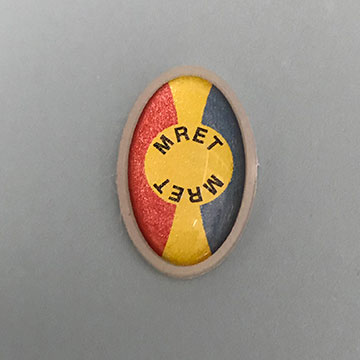All children from Embryo to adulthood need protection from non-ionizing radiation or avoidance and avoidance is impossible. A child’s tissues are growing and more susceptible. Adults will have a shorter duration of their lifetime in the electrosmog we live in, but need protection as well. Noise fields provide this protection. (See: MRET-Ohm EMF Protection Shield)
Scientific Evidence of Why the MRET Polymer Works To Eliminate EMR Damage. [ Download PDF]
Exp Oncol. 2011 Jun;33(2):62-70.
Long-term exposure to microwave radiation provokes cancer growth: evidences from radars and mobile communication systems.
Author information: Yakymenko Il, Sidorik E, Kyrylenko S, Chekhun V.
Abstract
In this review we discuss alarming epidemiological and experimental data on possible carcinogenic effects of long term exposure to low intensity microwave (MW) radiation. Recently, a number of reports revealed that under certain conditions the irradiation by low intensity MW can substantially induce cancer progression in humans and in animal models. The carcinogenic effect of MW irradiation is typically manifested after long term (up to 10 years and more) exposure. Nevertheless, even a year of operation of a powerful base transmitting station for mobile communication reportedly resulted in a dramatic increase of cancer incidence among population living nearby. In addition, model studies in rodents unveiled a significant increase in carcinogenesis after 17-24 months of MW exposure both in tumor-prone and intact animals. To that, such metabolic changes, as overproduction of reactive oxygen species, 8-hydroxi-2-deoxyguanosine formation, or ornithine decarboxylase activation under exposure to low intensity MW confirm a stress impact of this factor on living cells. We also address the issue of standards for assessment of biological effects of irradiation. It is now becoming increasingly evident that assessment of biological effects of non-ionizing radiation based on physical (thermal) approach used in recommendations of current regulatory bodies, including the International Commission on Non-Ionizing Radiation Protection (ICNIRP) Guidelines, requires urgent reevaluation. We conclude that recent data strongly point to the need for re-elaboration of the current safety limits for non-ionizing radiation using recently obtained knowledge. We also emphasize that the everyday exposure of both occupational and general public to MW radiation should be regulated based on a precautionary principles which imply maximum restriction of excessive exposure.
Decreased Survival for Childhood Leukemia in Proximity to Television Towers
Bruce Hocking & Ian Gordon
Pages 560-564 | Published online: 07 Aug 2010
Abstract
Previously, an increased risk of childhood leukemia was identified among children who resided in an inner ring (radius ~4 km) of 3 municipalities surrounding television towers, compared with children who resided in an outer ring (radius ~4-12 km) of 6 municipalities surrounding, but farther away from, the towers, which are situated in North Sydney, Australia. In the current study, the authors examined the survival experience of these children for all childhood leukemias, and for acute lymphatic leukemia (International Statistical Classification of Diseases and Related Health Problems, 9th revision [ICD-9] rubric 204.0) in particular. Of 123 cases of acute lymphatic leukemia, 29 cases (16 of whom died) were in the inner ring of municipalities nearest the towers, and 94 cases (34 of whom died) occurred in the outer, more-distant ring. There was a significant difference in survival rates between the 2 groups (log-rank test, p = 0.03; Wilcoxon, p = 0.05). The 5-yr survival in the inner ring of municipalities was 55%, and in the outer ring was 71% (i.e., subjects in the inner ring were 23% less likely to survive than those in the outer ring); at 10 yr, survival in the inner and outer rings was 33% and 62%, respectively. Following adjustment, the mortality rate ratio that the authors used to compare the inner ring with the outer ring was 2.1 (95% confidence interval = 1.1, 4.0). There was an association between residential proximity to the television towers and decreased survival among cases of childhood leukemia in North Sydney, Australia.
Video: Who Needs MRET?
Dr. Smith Explains.
MRET-Ohm EMF Protection Shield
PURCHASE HERE


